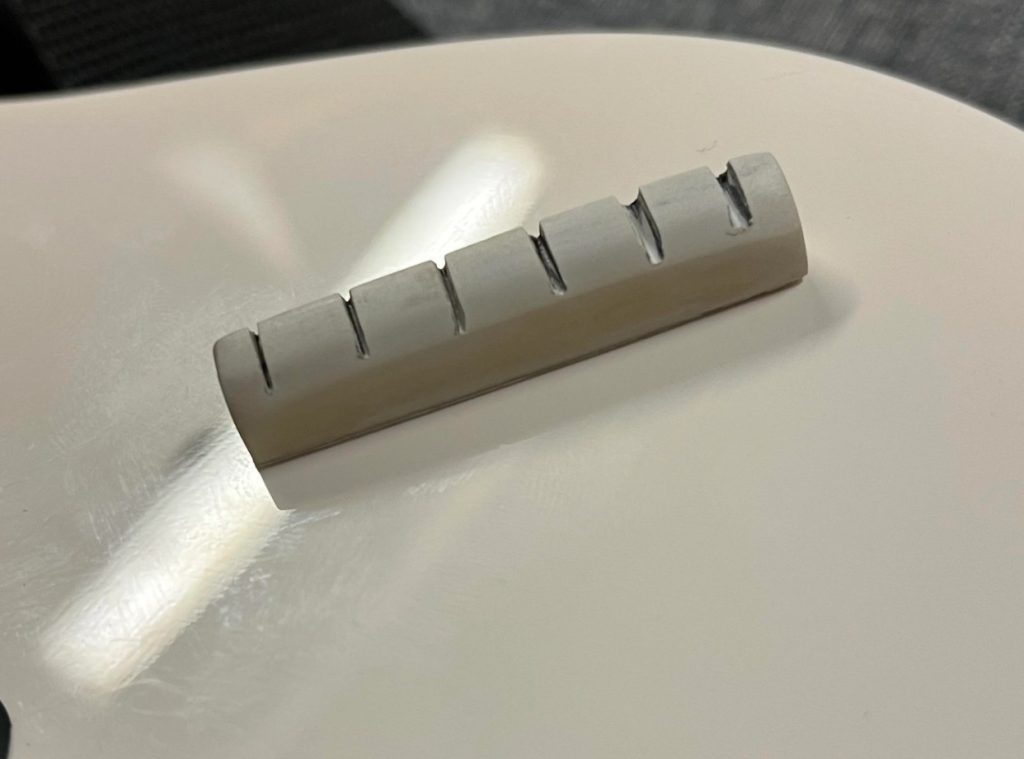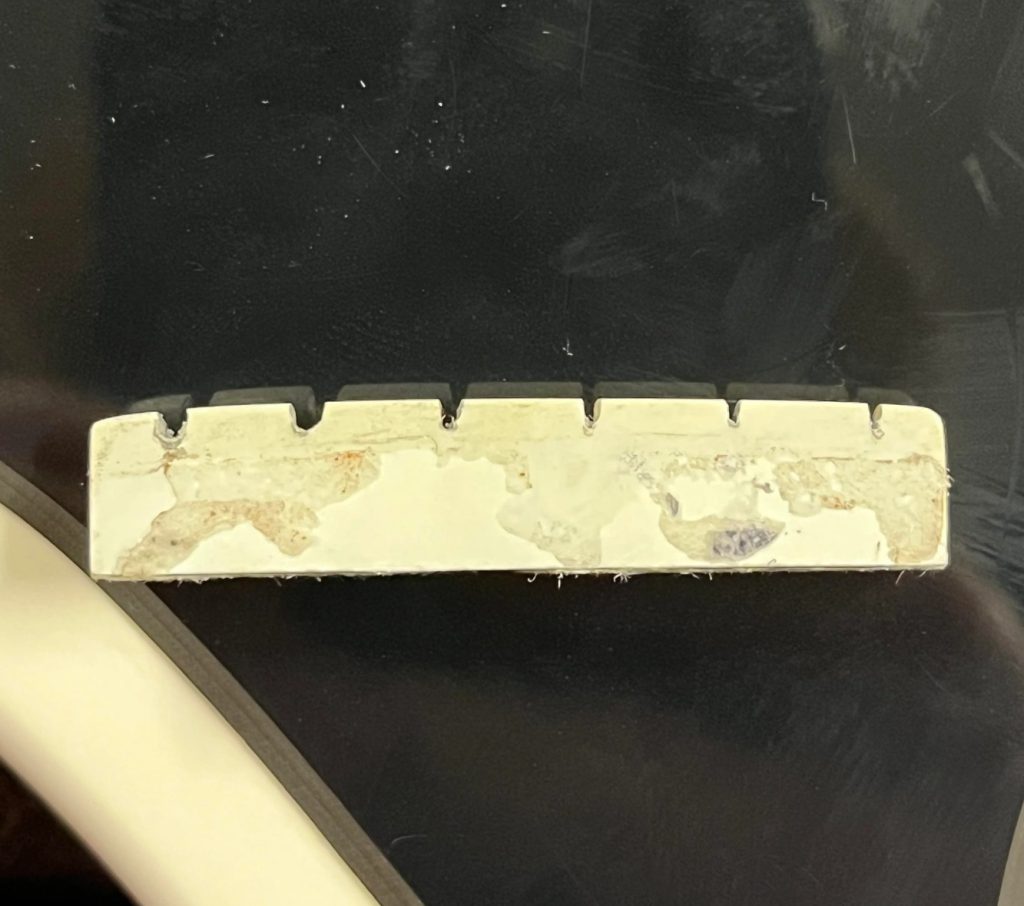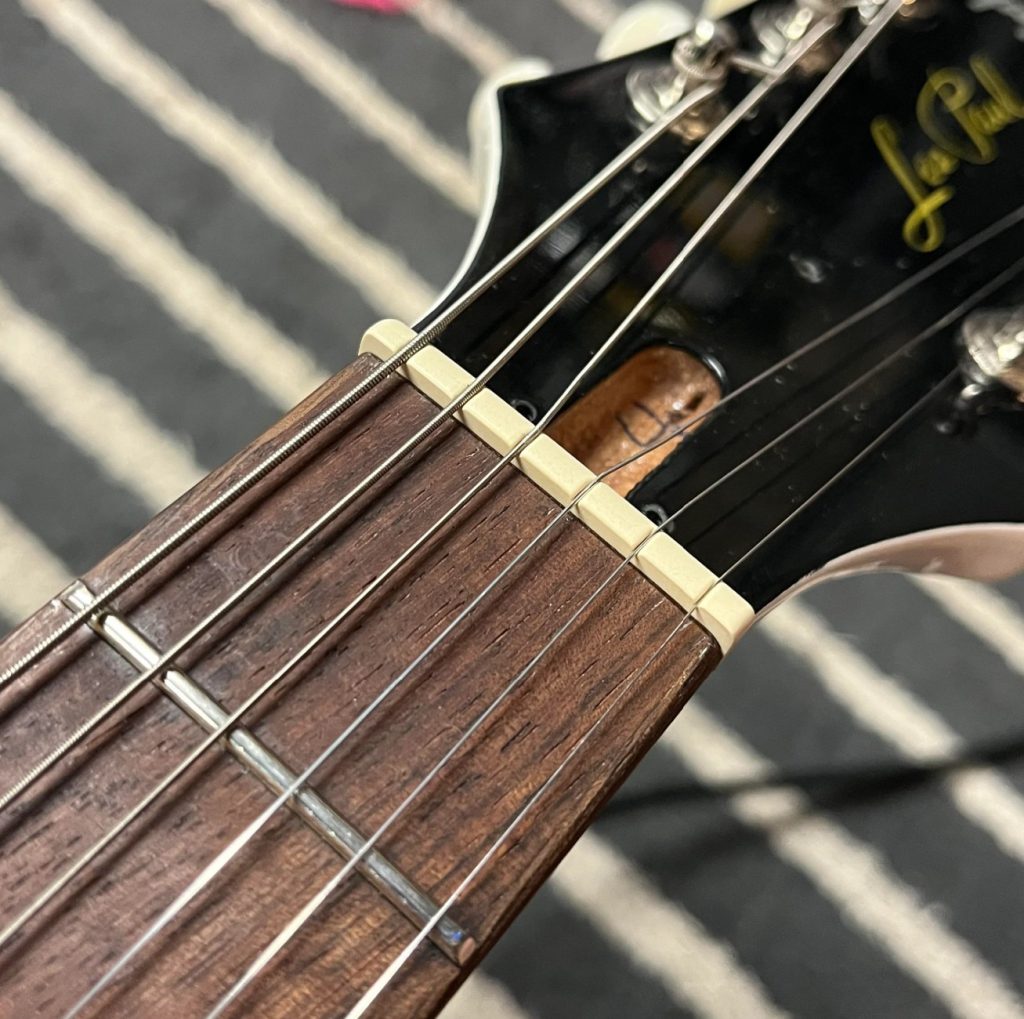I was reading a post on Reddit about a guy who had taken his guitar to a repair shop to have a very low nut sorted out. The bottom E A and D strings were buzzing against the frets so, the repair shop quite rightly replaced the nut (an option would be to shim underneath it, but I’m not a fan of that solution). Sadly, whoever was cutting the nut decided to use a chainsaw rather than professional diamond files – or so it would appear.
The slots were both ridiculously deeply cut and jagged – guaranteed to catch on the strings and cause tuning issues. Unfortunately this is an all too common problem but it is rare to see a so-called professional repair person, handing a guitar back in such a bad condition. What were they thinking?
Anyway, the guitar owner decided to take matters into their own hands and replace the nut themselves, and as you can see in the final photo, the strings are now sitting perfectly in the nut slots. Result – job done.



This got me thinking about the importance of nuts in general. One of the cheapest parts of you guitar, costing around £10 to buy pre-cut in bone or graphite, we really do take them for granted. Yet they make all the difference when it comes to everything from first fret tuning (playing open chords in tune), clarity of tone/sound from your strings and overall tuning stability. For decades, like many guitarists, I just took the nut for granted. Just assumed it did it’s job and needed no maintenance or attention.
Now with the internet, almost every other discussion about guitar problems seems to revolve around badly cut or seated nuts. The solution is usually simple – recut the nuts so they are the correct height over the first fret OR replace the nut.
A lot of cheaper end guitars will come fitted with a “plastic” or fake bone nut. I had a Fender Mexico Strat with one and was shocked. In these cases I always recommend replacing the nut with, as my preference, a Graphtec TUSQ XL graphite nut. Of course there is nothing wrong with bone nuts and some players swear by them for tone reasons, but the beauty of the Graphtec solution is that they “self-lubricate” due to the material used, so you won’t get those pinging noises from the string getting caught in the nut slot. Those noises are a sign that you are not going have much fun keeping your guitar in tune and IMHO, it’s time for a nut replacement or at the very least a bit of careful cleaning and shaping with a good nut file.
Bone nuts can be perfectly fine though, and I usually finish off each nut maintenance or renewal with a little bit of specialist nut lube (many on the market – all good) which keep the string lubricated against the bone and stops them rubbing or catching. This has the added benefit of preventing mid show string breaks – the nightmare of every gigging guitarist. A cheap and easy option is the old regular pencil tip rubbed in each of the nut slots which also works fine.
Sorting out your nut is not a major expense – not much more than a few packs of strings – and while it is an easy job once you know what you are doing, it’s also really easy to damage your nut slot and the finish around it, if you are not careful. If you don’t have the tools and have not changed your nut before, it’s probably best to get an experienced tech to do it. Unless the customer is really happy with the nut they have on their guitar, I recommend a new one as part of most setups. Once you’ve experienced a precision fitted and cut nut – which every guitar should have from the factory but often, sadly, they don’t – you will never accept anything less.